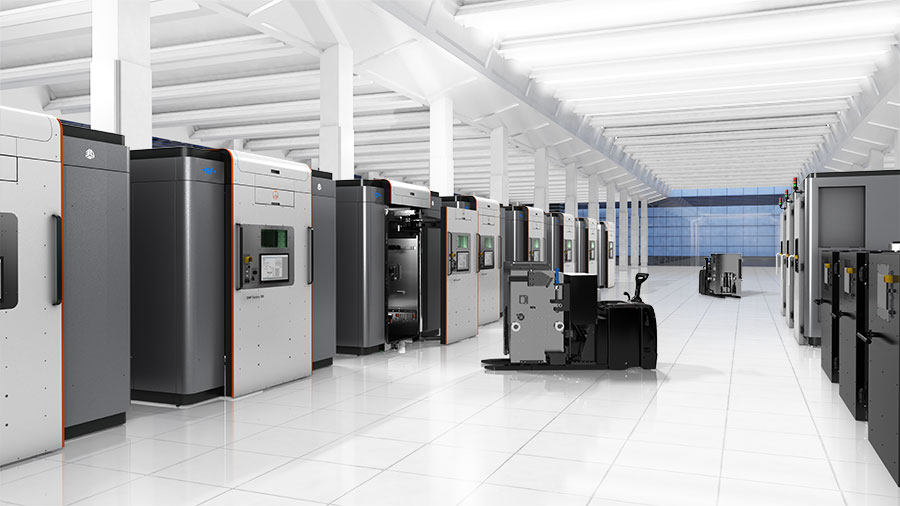Last year, theSemiconductor Industry Association’s(SIA) recorded record sales of $439 billion for the global semiconductor sector. However, the COVID-19 pandemic has cast into sharp relief just how vulnerable global supply chains are, illustrated by a squeeze on the supply of semiconductor chips.
Is 3D printing a solution to enhance supply chain resilience for such a core component of the modern tech world? I spoke with Scott Green, a Principal Solutions Leader at 3D printer OEM3D Systems, to learn more.
Car manufacturers such asFord,Toyota, andNissanhave all had to scale back production as silicon microprocessors’ availability has proven to be a manufacturing bottleneck. According to data firmIHS, semicon chip shortages are expected to delay the production of around 1M vehicles in Q1 of 2021 alone. It’s not just the automotive sector either, as games console OEMs likeMicrosoftandSonyhave also experienced severe stock shortages over the past year. TheNintendo Switchdrought of early 2020 was a pain point for me, personally.

3D Systems and wafer fabrication tooling
3D Systems’ work in the semiconductor market began when the company acquired Belgium-based LayerWise back in 2014. Before the buyout, the 3D printing service bureau already worked closely with semiconductor companies in and around Eindhoven. The knowledge passed on with the acquisition allowed 3D Systems to establish a semiconductor expertise center in Leuven, where it now works with semicon tooling manufacturers to 3D print optimized wafer fabrication tooling.
Green states, “What’s really interesting for us is to see the uptake in Metal AM components for semicon fab, and to be able to witness the technological advances which affect automotive and smart device manufacturers.”
Wafer fab tooling is the semiconductor industry’s manufacturing equipment, enabling everything from microprocessors to radio frequency amplifiers and LEDs. It encompasses various photolithographic and chemical processing equipment working in tandem, including oxidation apparatus, epitaxial reactors, vapor deposition systems, and etching equipment. Most of the tooling involved in the multi-step process is designed to either deposit or remove materials from a wafer. The process as a whole can take up to 13 weeks, depending on the electronic device manufactured.
Major tooling OEMs such asASML,KLA, andLam Researchare predominantly involved with highly-specialized parts in low volume. Rather than pumping out as many components as they can, they’re more concerned with refining the quality of their parts and the efficiency of their fabrication processes in a bid to boost productivity and increase yields. For reference, large wafer fab facilities can produce upwards of 100,000 wafers a month, so an increase in productivity of just 5% can result in several thousand extra semicon devices.
Green describes the scenario above as a perfect opportunity for 3D Systems’ Direct Metal Printing (DMP) powder bed fusion technology to lend a helping hand. He explains, “With metal 3D printing, when it comes to producing millions of parts – the cost is too high. We won’t print mountains of mass market heat sinks with low technical requirements, but low-volume, highly complex components and tooling such as semicon fab equipment is a perfect fit. This is a bread and butter DMP application.”

The benefits of DMP 3D printing
Not just an alternative production method, DMP additive manufacturing brings its own set of benefits to the table. First of all, the technology lends itself quite well to geometric optimization, meaning entire assemblies can be consolidated into single lightweight monolithic structures. With free space coming at a premium, this enables overall system complexity to be reduced and mechanisms with printed parts to move faster than their traditionally manufactured counterparts, speeding up the entire wafer fab process.
Green adds, “DMP is probably going to stay a very active topic for semicon tooling companies. You need super clean environments; you need to have the material and end product purity and geometric complexity that our DMP technology offers. Your critical components also need thermal optimization to make sure that you’ve got low thermal gradients and maximum heat dissipation wherever required..”
As well as enabling performance improvements, DMP can also streamline supply chains. For example, lithography systems are highly complex with hundreds of thousands of parts and complex assemblies. As such, geometric simplification can help bypass the vast supply chain of integrators and subsystem assemblers. Without the need for processes such as braising, welding, fitting, and sheet metal casting, 3D printing wafer fab tooling can potentially drive down manufacturing costs. The technology can also enable faster design iterations in early stage development, as well as faster time to market for semicon systems.
It’s fair to say 3D Systems alone probably isn’t enough to solve our semicon chip shortage, but every little helps when it comes to optimizations in wafer fab tooling. Following the success it has garnered in Europe, the company intends to expand its semicon tooling work to the Bay Area and countries like Japan and Korea, where the most extensive opportunities for process refinement await.

Subscribe to the3D Printing Industry newsletterfor the latest news in additive manufacturing. You can also stay connected by following us onTwitter和喜欢us onFacebook.
Looking for a career in additive manufacturing? Visit3D Printing Jobsfor a selection of roles in the industry.
Featured image shows the DMP 500 Factory 3D printing system. Image via 3D Systems.


